Nepal Hidden Gems That Most Tourists Never See
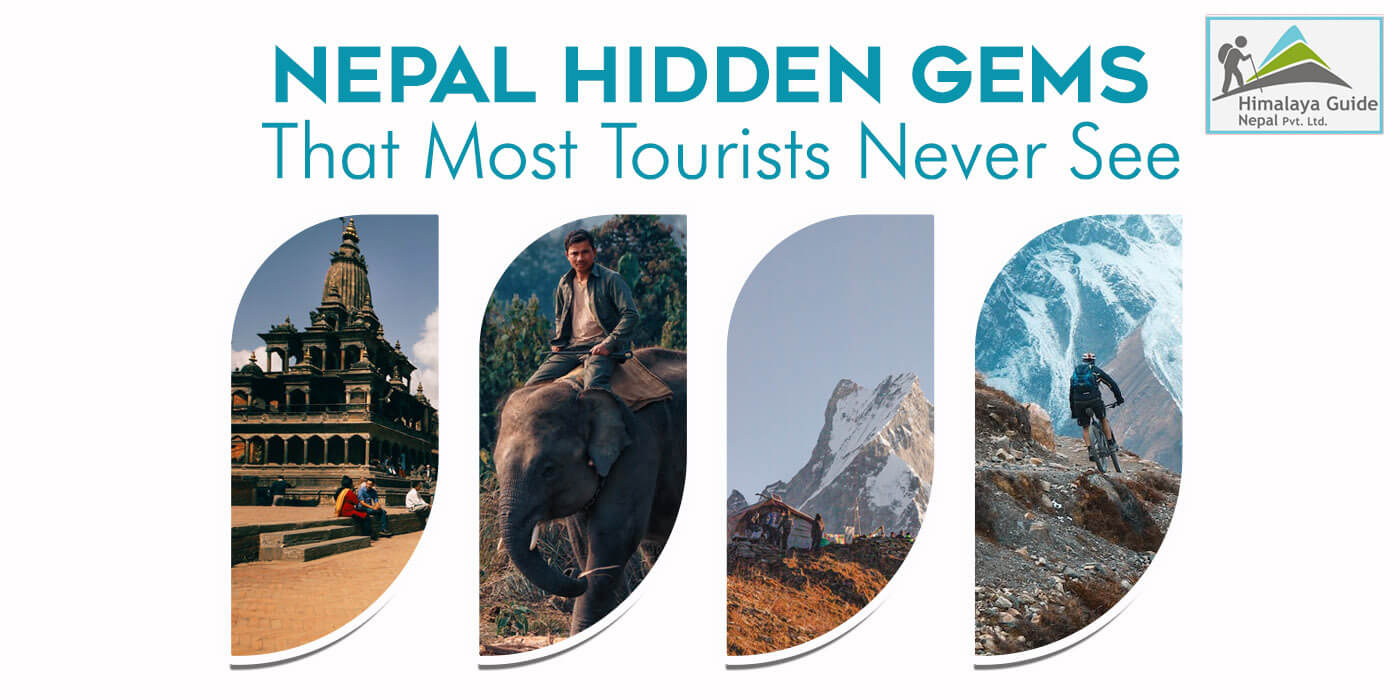
2 Dec 2022 Chandra Gurung
Trekking there must be your top priority if you’re considering visiting Nepal. However, Nepal has much more to offer than the well-known Himalayan path and its protected cultural history. So, we’ve developed a list of eight Nepal hidden gems for travellers.
There are so many unexplored and intriguing places in Nepal that are worth visiting. The Terai flatlands and the tallest peak are part of Nepal’s diversified topography. Despite Nepal’s modest size, countless locations have yet to be explored.
Without further ado, let’s look at the eight Nepal hidden gems you ought to see on your upcoming vacation.
1. Barun Valley, Also Known as the Valley of Eternity
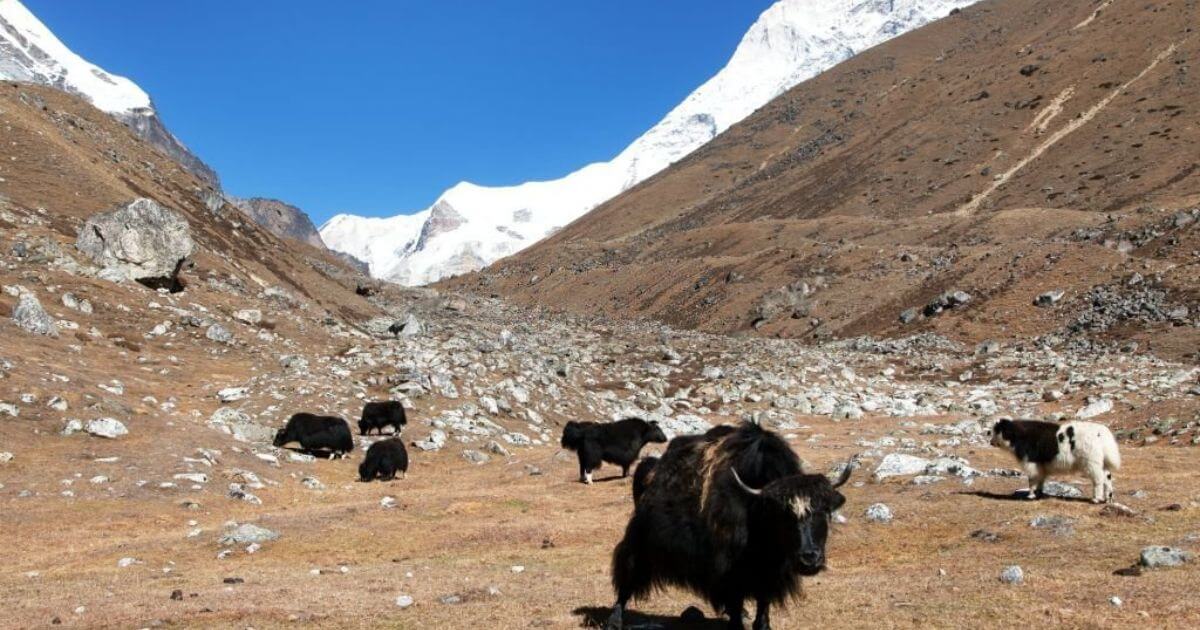
“Difficult paths frequently lead to lovely destinations.” This quotation has been handled appropriately by Barun Valley. The valley is uninhabited and has yet to be discovered by anybody. Just beneath the magnificent Mt. Makalu, the route passes through the Makalu-Barun National Park.
The Barun Valley is just beyond the Everest area in northeastern Nepal. Inside Makalu-Barun National Park is the whole valley. Only a hiking route can get you there. The valley is also on the way to Makalu Base Camp.
The survey found ethical Yakkha and Limbu people living in the Barun Valley. But they go to lower-lying areas like Dharan in quest of a warm haven. In the Limbu language, this valley is referred to as “Chukchuwa Upatyaka.”
Additionally, the valley is referred to as “Nghe” in Sherpa, which is Sherpa for “Sacred Place.” Among the seven, it is also one of the “Beyul.” Beyul, the evergreen valley in the Himalayas where no one ages, is described in a Buddhist sacred text. Additionally, individuals who are within Beyul will not be harmed whenever the world is set to end.
The valley is a great place to see birds because a National Park surrounds it. 440 species of birds inhabit it due to its diversified habitat. There are even more; it is home to 75 mammals and endangered species like the Red Panda, Musk Deer, and Snow Leopard.
The trip to Barun Valley starts at Tumlingtar’s tropical forest. Later, it travels from Kauma to the subalpine woodland. However, the valley is primarily covered in grassland (Kharka). Regarding the flora, there are 3,000 species of flowering plants, 56 uncommon plants, 25 varieties of rhododendrons, and 47 orchids.
Similar to how there are numerous Kharka, including Yangri, Langmale, Neha, and many others. With its stunning waterfalls, contrasting lovely grassland, and snow-capped peaks, Ripuk is the most scenic location in the valley.
You pass through rural areas of eastern Nepal on the way to Barun Valley. It’s not simple to enter the valley, but it’s also not that difficult either. You must invest some effort into trekking, as we already stated.
The destination could be reached by both road and air transportation before beginning a journey. It’s not the only thing, though. Like many other places, this one has religious importance. Shiva Dhara is the holy place.
The water cascading down the 500-foot-high granite wall at the top is considered holy water. Similarly, Guru Rinpoche has visited this location, according to Buddhist folklore.
Considering exploring the Valley of Eternity? The Makalu Base Camp Trek is a great option if you prefer to hike a less-traveled path.
2. Wildlife Hub: Bardiya National Park
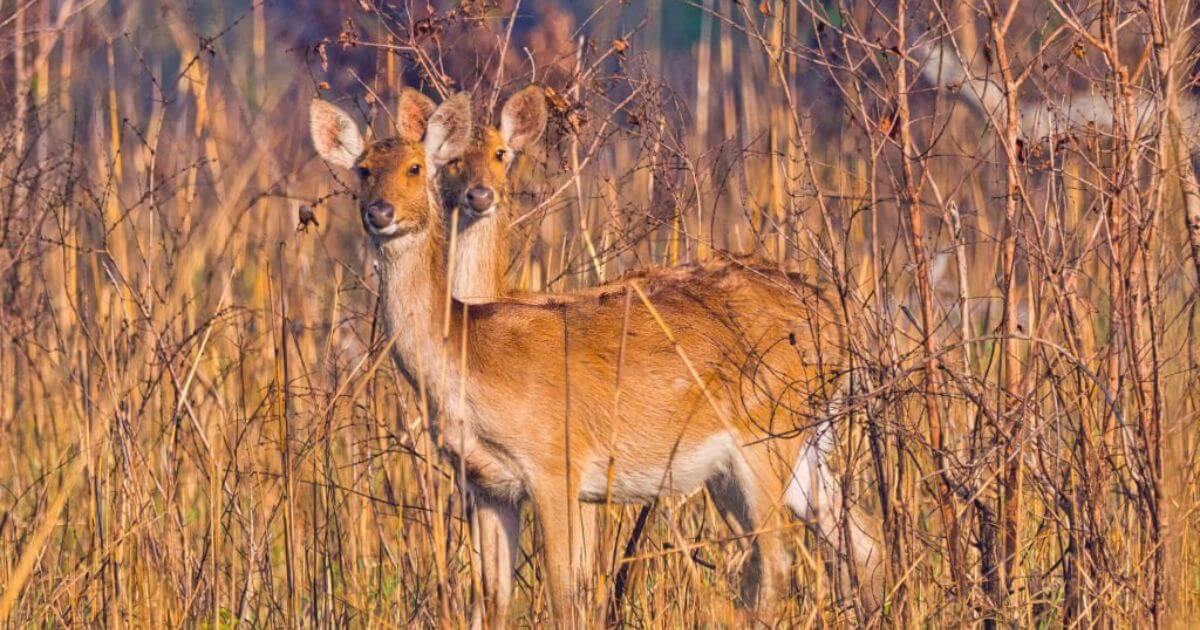
Close to the border with India, on Nepal’s southwest coast, is where you’ll find Bardiya National Park. In 1976, it was initially formed as the Karnali Wildlife Reserve. Its boundaries were increased, and Bardiya Wildlife Reserve was given a new name in 1982. It received the designation of National Park later that year.
An alternative to Chitwan National Park is Bardiya National Park. But visiting Bardiya National Park is a unique experience. It has yet to receive the same publicity as Chitwan National Park. Speaking of the spotlight, this national park’s main draw is seeing Bengal tigers.
In addition, Nepal’s population of large cats has increased by three times since 2010. In the most recent census conducted in 2022, there are currently 355 wild tigers, up from just 121 in 2010. For the same reason, WWF bestows the TX2 award on the Bardia National Park.
Along with 30 mammals, it is also home to several endangered species, including the Bengal Tiger, One-horned Rhinoceros, Wild Elephant, Swamp Deer, and Black Buck. More than 230 bird species live there, including Sarus cranes, Bengal flamingos, and lesser flamingos.
Several endangered wildlife species call it home, like the Gangetic Dolphin and the Mugger Crocodile. The National Park is home to some fish, snakes, and reptiles. Sal trees dominate over 70% of the forest, with the remaining area comprising grassland and riverine forest.
Bardiya National Park does have a lot to offer in terms of tourist attractions in addition to its flora and fauna. The headquarters of the National Park has a museum. There are other factors as well. They even offer tourists a Tharu cultural program. Rafting is permitted on the Karnali River for an exhilarating trip.
Compared to Chitwan National Park, Bardiya National Park has seen less exploration. Contrary to some, consider something other than Bardiya as a backup. Give it a shot; you won’t be disappointed.
3. Kirtipur – A Favourite Narrow Town
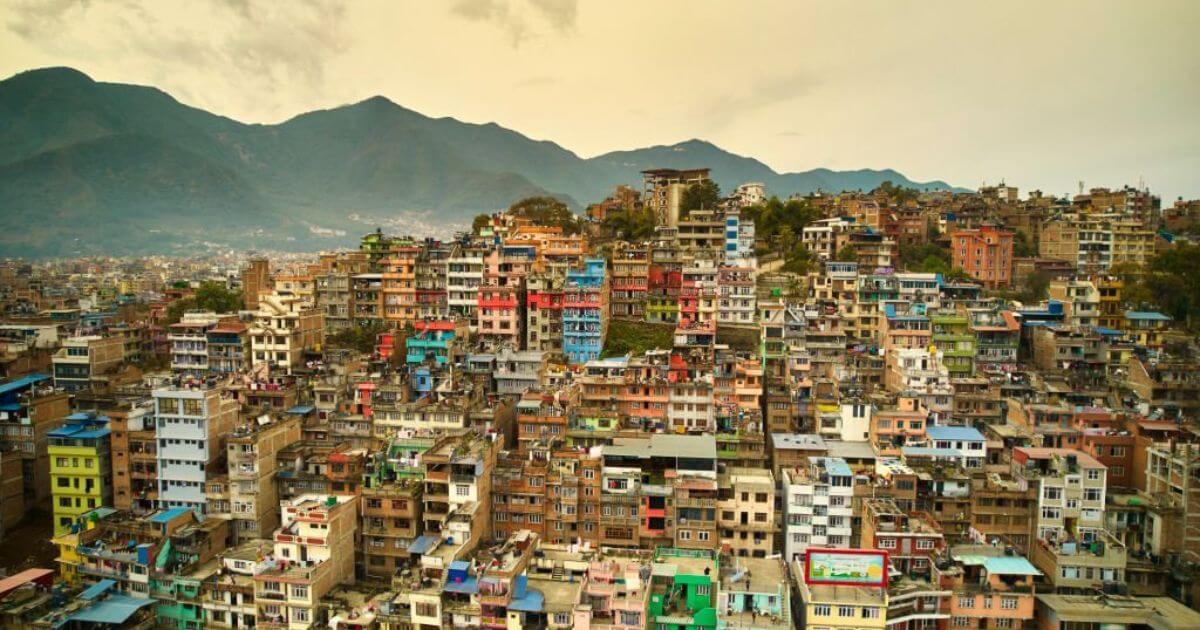
The historic Newar town of Kirtipur is situated in the Kathmandu valley’s southwest region. The cultural center of the Newars is this town. Most essential, though, is that this location offers some of the best Newari cuisines in the entire Kathmandu Valley.
Ever intend to travel to Kirtipur? Take advantage of the chance to sample real Newari food. Lahana, supported by the community of Newari women, has been serving traditional Newari meals for a long time.
Additionally important historically is Kirtipur. The town was a part of Lalitpur in the 11th century when history began (Patan). On his third effort, Prithivi Narayan Shah, later in the 18th century, conquered it. After that, he amputated everyone’s ears and noses.
Residents of Kipoo are the Newars, who are thought to be derived from Kirat King Yalamber (Kirtipur). Sanskrit gives Kirtipur its name, which translates to “glory city” and “Kirti,” respectively. However, “Kipoo” was a well-known name in the past.
Along with its rich history, Kirtipur is renowned for its beautifully preserved cultural legacy, which has distinctive architectural and religious elements. In 2008, it was designated as a tentative UNESCO site. Bagh Bhairab, Chilancho Stupa, Uma Maheshwar, and Shri Kirti Bihar are notable locations.
Days may be extended to visit more places, like Champa Devi Hill, Tau Daha, Dev Pukku, Machhegaun, and others.
There are more locations for the Newari charms, including tourist, traps Patan, and Bhaktapur. You should take advantage of Kirtipur if you truly want to experience Newari culture and cuisine.
4. Discover the Ancient Newari Town of Panauti
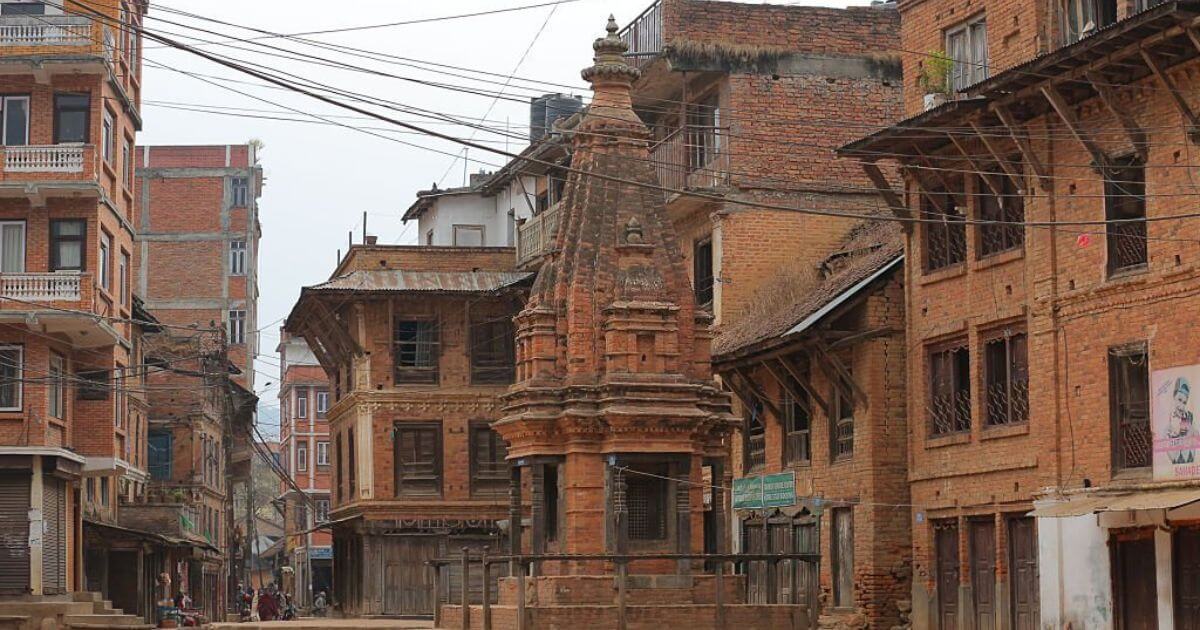
Panauti shares similar religious, cultural, and historical values to Kirtipur. It adds to the appeal of Newari cuisine, culture, and history. The site has been protected for many years among the best and the most historic destinations to visit in Nepal.
The town’s history dates back to the Malla era. This little realm was a dowry given by King Bhupatindra Malla to his sister. It became well-known as the commercial hub of the salt trade route connecting Tibet and India during the Rana era.
Another claim made by certain academics is that King Ananda Malla founded Panauti sometime in the 12th century. A golden sculpture dated 1385 and was discovered in the Indreshwar Temple also has King Harishchandra Dev’s signature.
Panauti is also highly valued from a religious standpoint. Many worshipers pray for salvation. Even Lord Indra (King of God), the purest form of a holy river, received his deliverance from Lord Shiva at this holy location at the confluence of three sacred rivers: the Roshi, Punyamati, and Lilawati.
The path leads to Nepal’s oldest civilization after passing through the bus station’s bustle. The spotless Panauti is reached via brick-paved roads. After approaching the places, a spiritual atmosphere could be felt.
The largest structure nearby is the Indreshwar Mahadev Temple. Buddhist and Hindu temples have an effect here. Unmanta Bhairav Temple, Brahmayani Temple, Krishna Narayan Temple, and Gorakhnath Temple are also significant temples. Additionally, the unified architecture of the temples and monuments transports us back in time.
The Nepalese chariot festival, or Jatra, is observed on particular days depending on the lunar calendar. It is observed with a feast, get-together, music, dance, and vibrant traditions. Panauti has two Jatra celebrations: the Makar Jatra and the Panauti Jatra.
An excellent getaway from Kathmandu Valley is Panauti. In 1996, it was added to the UNESCO list of World Heritage Sites. Try “Yomari,” a steamed rice dumpling with a sweet called “Chaku” inside, if you can visit Panauti. It is a specialty of the Panauti-born Newari people.
5. Taj Mahal of Nepal: Ranighat Palace
The Rana palace sometimes referred to as “Rani Mahal,” was built in Nepal’s Palpa district in 1893. Its name is Ranighat Palace. In honor of his late wife, Tej Kumari Rana, General Khadga Shamsher Jang Bahadur Rana constructed it.
Rani Mahal carries the Rana Dynasty’s historical significance. The palace underwent renovations to draw in more visitors and was turned into a museum in 2017. It is, nevertheless, Nepal’s least popular tourist destination. But exploring this uncharted territory can be a terrific alternative.
The third son of Dhir Shamsher Jung Rana, the commander-in-chief of the Nepalese Army, was Khadga Shamsher Jang Bahadur Rana. He was chosen to serve as the Nepalese Army’s Commander-in-Chief following the 42 Saalko Parva (coup) in 1885. But that was short-lived.
General Khadga Shamsher Rana’s name was forcibly removed from the royal title in 1887. He was then appointed the Commander-in-Chief of western Nepal and dispatched to Palpa-Gauda, the location of Rani Mahal. He also found Lumbini while he was at Palpa, along with an inscription on an Ashoka Pillar that proved Buddha was born there.
Along the shores of the Kali Gandaki River, which rises in Damodar Kunda and Upper Mustang, lies this palace with a European neoclassical style. On the express instruction of General Rana at the time, Indian architects created the palace. The construction process took nearly four years to finish.
The General’s youngest wife, Tej Kumari Rana, died in Palpa in 1892. To relieve his agony, he built the palace in her honour and gave it the name Rani Mahal (Queen Palace). The “Taj Mahal of Nepal” is the name given to the Rani Mahal in Nepal.
The Taj Mahal and the Rani Mahal exemplified devotion to their respective queens. Additionally, both are built on a rocky terrace near the river’s edge.
The General was still at the centre of debate after the Coup of 1885. He left the palace behind and escaped to India with his family. The palace existed in a dangerous state. As a result, both the locals and the government were paying attention to it. It was refurbished and turned into a museum last in 2017.
About 280 kilometers separate Rani Mahal from Kathmandu. It is quite simple to get to. Nevertheless, there are several options. Other detours are used by public transportation to reach Tansen Bazaar. After that, the town is only a few miles away.
Tansen Bazaar is another destination close to the Rani Mahal. Both secular and religious sites can be found in Tansen. It would be best not to skip seeing Tansen Durbar, Shreenagar, Guffa Dada, Bhagwati Temple, and numerous more locations while in Tansen Bazaar.
6. Ilam: The Nepalese Tea Garden

Ilam is a district in Nepal. But the tea garden is what makes it famous. Kanyam, a little area of the Ilam district, is where the tea garden is located. Ilam still has a lot of interesting places to discover. Ilam is the best place to go in Nepal to get the whole Eastern Nepal experience.
Ilam is situated along the border with India in the very east of Nepal. The distance between Kathmandu and the Ilam headquarters is around 600 kilometres. Although it is far, it is easily accessible from Kathmandu and other regions of Nepal. The entrance to the Mt. Kanchenjunga Base Camp Trek is located there. From the Limbu language, where “Il” means “twisted” and “Lam” means “roads,” comes the word “ilam.”
Ilam is the seat of government for Nepal’s Tea Garden, as we have already mentioned. Ilam tea is so well-known because of its excellence, flavour, and genuineness. The vacation wouldn’t be worthwhile if you didn’t drink any tea.
Ilam tea is widely consumed across the nation. Additionally, it is exported to other nations in the interim. The 240-hectare tea estate generates 125 kilos of tea annually. The late King Birendra Shah was the one who first started it to expand the market for domestic tea production.
Ilam is situated on land that is part of the Mahabharat and Siwalik Ranges. The weather is nice, just above the Terai region at 800 meters above sea level. The uneven hills may provide a view of breathtaking landscapes on the horizon.
Additionally, you may enjoy a stunning view of the Singalila range of the Himalayas while sipping your tea. The range comprises the Indian mountains Frey Peak, Mount Pandim, and others, in addition to the Kanchenjunga and Kabru.
Before the Gorkha-Limbuwan Treaty of 1774 AD, Limbuwan governed an autonomous kingdom in eastern Nepal. About 30–40 thousand years ago, when the Yakthung people ruled northeast India and eastern Nepal regions, Limbuwan developed a lengthy and fascinating history.
As a result, Ilam has a different way of life than the rest of Nepal. The area has a distinctive culture and tradition because it is populated by the Kirati people. Additionally, there are differences in the food, people, cultures, festivals, and languages. Furthermore, Kiraticism is practiced by the vast majority of people.
There are other things besides a tea garden in Ilam. Additionally, it is an excellent place for plants that are aromatic and therapeutic. Due to a suitable climate, cash crops like potatoes, ginger, cardamom, and chili are widely cultivated.
Ilam also manufactures some of Nepal’s greatest dairy products. Popular items to bring home as mementos are cheese and “Churpi”.
7. Hindu Goddess Sita’s Birthplace: Janakpur
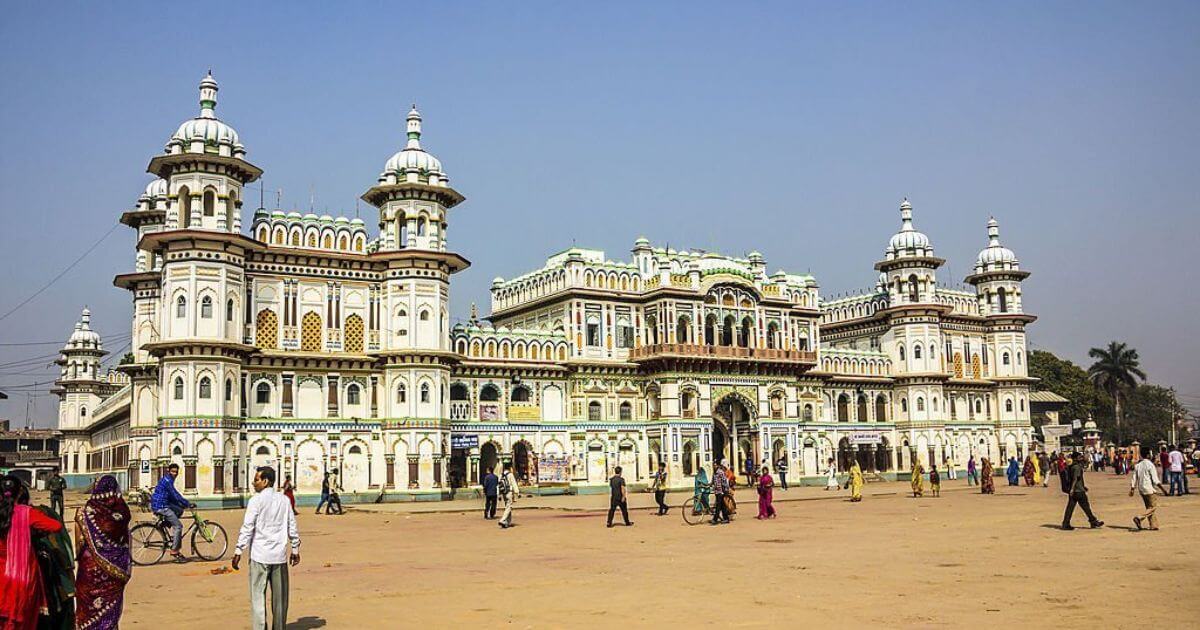
The most important Dham of Mithila is Janakpur, located close to the Indian border in Nepal’s Madhesh Province’s Dhanusha District. Janakpur, an ancient city, lies about 225 kilometers (140 miles) southeast of Kathmandu. It retains centuries-old artwork, cultural traditions, and legends from the Treta Yuga era of God Ram and Goddess Sita.
Goddess Sita, the seventh incarnation of Lord Vishnu, was born in Janakpur and later married Lord Ram, the prince of King Dasharatha. She was the daughter of King Janak. Hindus consider Janakpur Dham a sacred site, and the celebration is joyfully celebrated every year between Ram Navami and Bibaha Panchami.
It is also the most important location in the world because of the vivid and distinctive artwork, the people, and their culture and way of life. The ideal place to go is Janakpur to see the sacred site and learn about the residents’ preservation of century-old art and craft.
8. Gorkha Durbar- The Beginning of Nepal’s Unification
Gorkha Durbar (Palace) is an important historical location for the Nepalese. Nevertheless, it is not well-known to tourists from other countries. Most Nepalese are eager to see the palace of the country’s first king, in this case.
The spot, perched atop the Gorkha Bazaar, offers a breathtaking view of the Annapurna, Manaslu, and Ganesh mountain ranges.
Ram Shah (Prithivi Narayan Shah’s father) erected this iconic palace in the 16th century, showcasing the grace of Newari design. The palace comprises a fort, a temple, and the actual palace. The handicrafts and woodcarvings of various gods and mythical animals are astonishing.
The palace has a straightforward design. The Hanuman statue located after the Palace Guest House is accessed from the eastern side. The palace, Gorkha Kalika Temple, and Gorakhnath Cave are all located in the middle section. There is also a helipad on the western end of the site.
The palace serves as the Shah Dynasty’s ancestral residence. It is Nepal’s final dynasty. Before the decision of Prithivi Narayan Shah, Gorkha was a small kingdom. Several kingdoms made up Nepal’s previous divisions.
After his father died, Prithvi Narayan Shah succeeded to the throne and declared himself king of Nepal. The process of uniting Nepal starts there.
You’ll find Gorkha Palace at the peak of the Gorkha market in the Gorkha district. The western portion of Kathmandu Valley is where it is situated. By bus, the 138-kilometer journey to Kathmandu might take about 5 hours. There are two ways to get to the palace from the market: by foot, 1500 steps, or by cab, at the back of the palace.
One of the important religious sites is Gorkha Palace. Therefore, accessing the premises while wearing leather clothing is completely prohibited. Even non-Hindus must view from the terrace because they are not permitted inside the temple. The most important place of worship is Gorakhkali Temple. The same temple is where Gorkha got its name.
It might be a fantastic location for your next vacation to Nepal despite not being a well-known tourist destination. The area has a lot of promise as well. In addition to the site, there are numerous other places to see close to the palace, including Sita Cave, the longest cave in Nepal, Tallo Durbar, the Lower Palace, a museum, and many others.
Gorkha is also easily reachable from Pokhara and Kathmandu. Gorkha Durbar is a must-see location in Nepal if you want to comprehend the country’s culture and history fully. The Manaslu Circuit Trek is similar. It is situated 8,163 meters beneath Mount Manaslu, the eighth-highest summit in the world.
Concluding
These were a few of Nepal’s undiscovered locations. To fully understand Nepal, you should visit these places rather than get caught in tourist traps. We hope that you will consider going to these locations soon.
